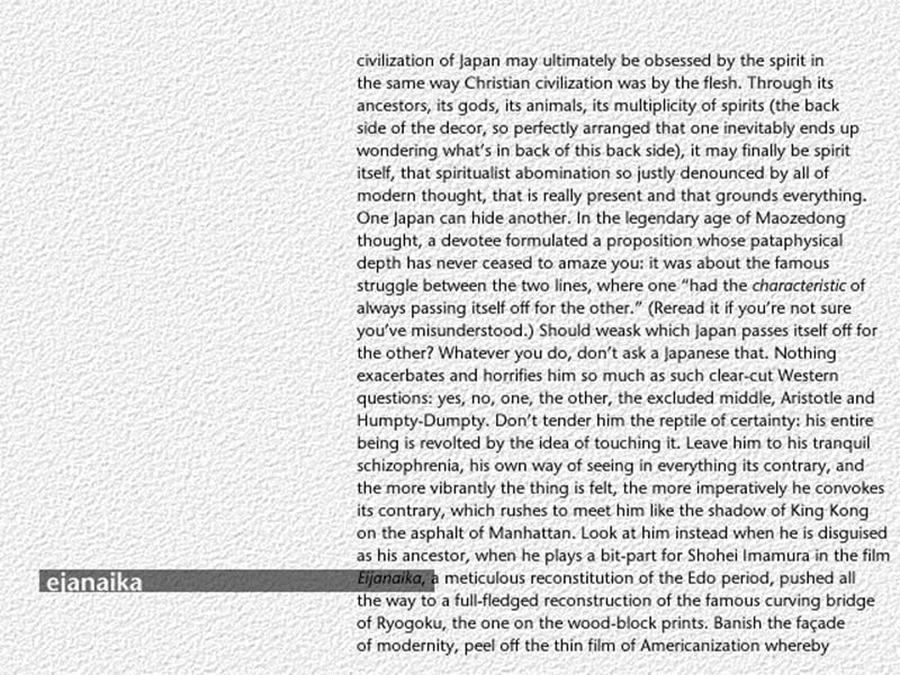DEPAYS6 STACK011

- Id : 1124
- Catégorie : PHOTO
- Séquence : Depays6
- Card : DEPAYS6 STACK011
Navigation :
Médias :
No clipNo sound
Text :
civilization of Japan may ultimately be obsessed by the spirit in
the same way Christian civilization was by the flesh. Through its
ancestors, it’s gods, its animals, its multiplicity of spirits (the back
side of the decor, so perfectly arranged that one inevitably ends up
wondering what’s in back of this back side), it may finally be spirit
itself, that spiritualist abomination so justly denounced by all of
modern thought, that is really present and that grounds everything.
One Japan can hide another. In the legendary age of maozedong
thought, a devotee formulated a proposition whose pataphysical
depth has never ceased to amaze you: it was about the famous
struggle between the two lines, where one « had the characteristic of
always passing itself off for the other. » (Reread it if you’re not sure
you’ve misunderstood.) Should we ask a Japanese that. Nothing
exacerbates and horrifies him so much as such clear-cut Western
question: yes, no, one, the other, the excluded middle, Aristotle and
Humpty-Dumpty. Don’t tender him the reptile of certainty: his entire
being is revolted by the idea of touching it. Leave him to his tranquil
schizophrenia, his own way of seeing in everything its contrary, and
the more vibrantly the thing is felt, the more imperatively he convokes
its contrary, which rushes to meet him like the shadow of king Kong
on the asphalt of Manhattan. Look at him instead when he is disguised
as his ancestor, when he plays a bit-part for Shonei Imamura in the film
Eijanaika, a meticulous reconstitution of the Edo period, pushed all
the way to a full-fledged reconstruction of the famous curving bridge
of Ryogoku, the one on the wood-block prints. Banish the façade
of modernity, peel off the thin film of Americanization whereby